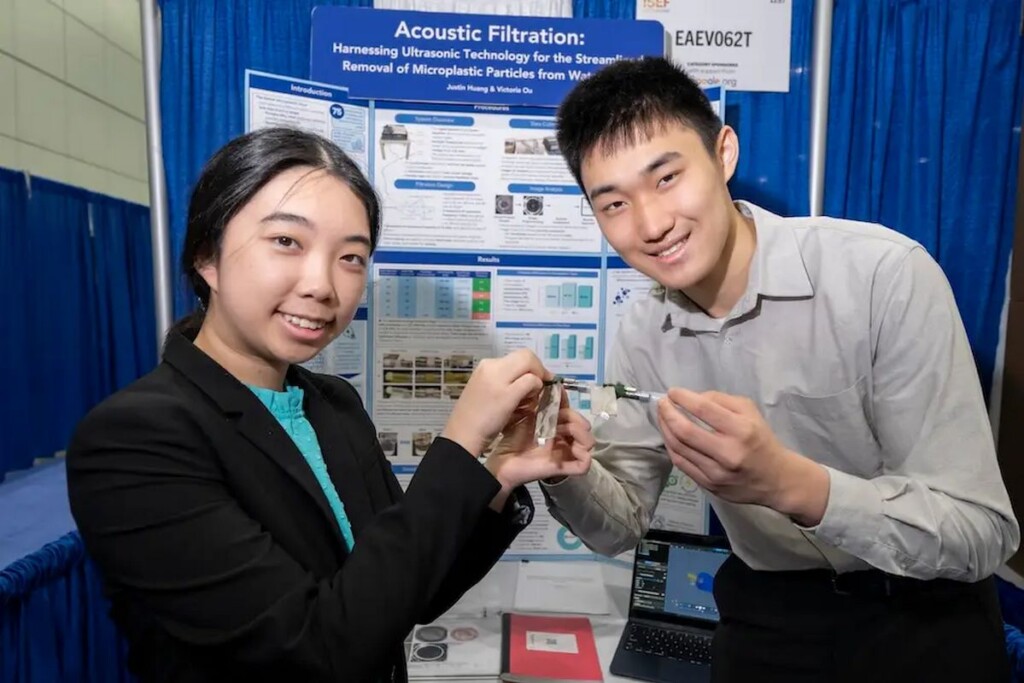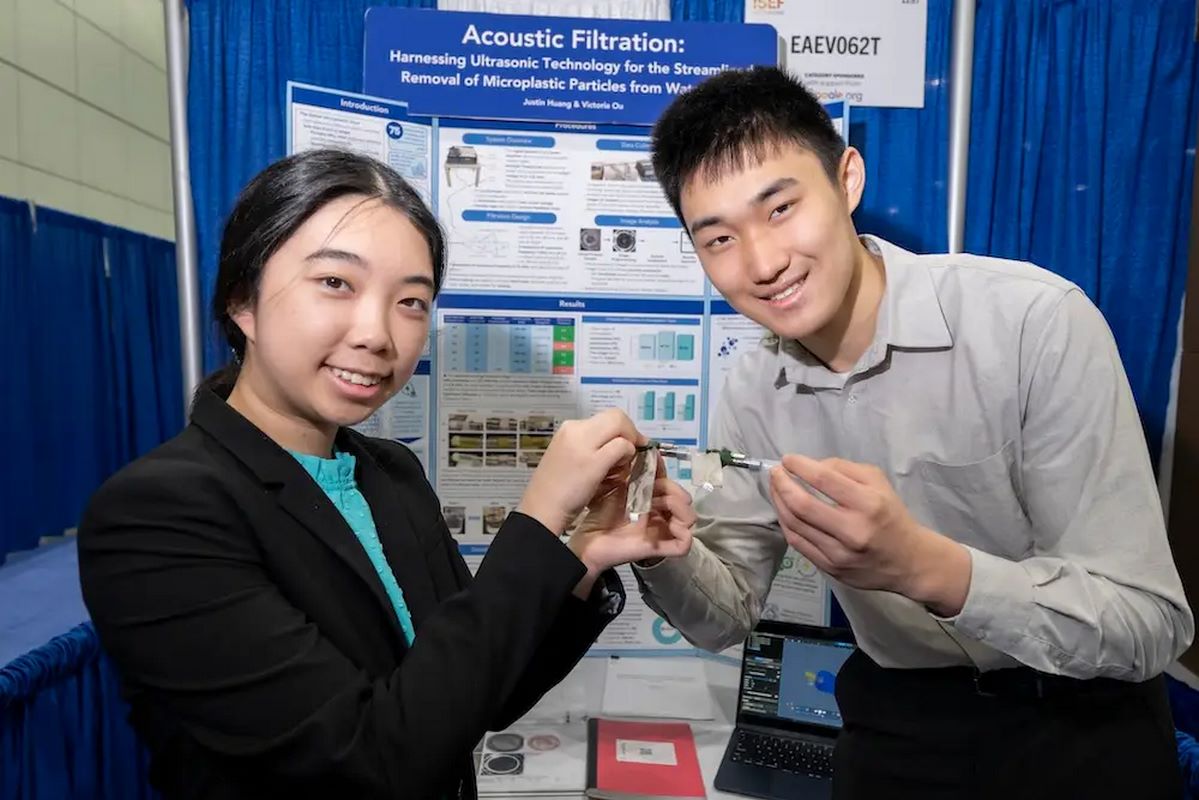
A pair of high schoolers invented a unique water filtration device that uses a wall of sound to hold back microplastic particles from running water.
In lab tests, the acoustic force from the high-frequency sound waves removed between 84% and 94% of the suspended microplastic particles in a single pass, and they are using the reward money from a prestigious prize to attempt to scale up their invention.
Without beating a dead horse, microplastic particles are everywhere on Earth—raining down from the jetstream, blowing up to the summit of Everest, and located at the deepest points of the ocean. Once ingested by humans they have been found to infiltrate every organ that has so far been examined for them.
It’s a monumental challenge to address this pancontaminant, but high schoolers Justin Huang and Victoria Ou of Woodlands, Texas, may just have a clever solution.
Using ultrasonic sound waves that move through water freely, the teens have managed to capture as much as 94% of microplastic contaminants by pushing them away from the water’s outflow point.
Their device is no bigger than a pen, and improves on other designs that have tried to use ultrasonic waves to address microplastics in wastewater and drinking water.
“This is the first year we’ve done this,” Huang told Business Insider backstage after receiving their award. “If we could refine this—maybe use more professional equipment, maybe go to a lab instead of testing from our home—we could really improve our device and get it ready for large-scale manufacturing.”
Ou and Huang presented their work at last week’s Regeneron International Science and Engineering Fair (ISEF) in Los Angeles, during which they won the Gordon E. Moore Award for Positive Outcomes for Future Generations worth $50,000.
They also picked up first place in their Google-sponsored category, Earth and Environmental Sciences.
THE ISEF WINNERS AS REPORTED BY GNN:
- High Schooler Wins $10,000 for Discovery Solution to Mysterious Outbreak Killing Sea Turtles in His Hawaii Hometown
- 16-year-old Wins $75,000 for Her Award-Winning Discovery That Could Help Revolutionize Biomedical Implants
- High School Student Invents an A.I. Powered Trap That Zaps Invasive Lanternflies
- Student Dreams of Stadiums Harnessing Crowd Noise for Electricity–Inspired by Monsters Inc.
“This is a pretty new approach. We only found one study that was trying to use ultrasound to predict the flow of particles in water, but it didn’t completely filter them out yet,” said Ou, who has known Huang since elementary school.
In developing their device, the pair visited wastewater and sewage treatment plants near their home and asked how they regulated microplastics. The answer they received was somewhat of a surprise: the plant had no such regulations in place. For starters, there isn’t a cost-effective means of doing so, and also the United States EPA doesn’t have regulations for microplastic contaminants in the water.
Ou and Huang believe their technology could be used in wastewater treatment plants like the one they visited, as well as industrial textile plants, and rural water sources. On a smaller scale, it could filter microplastics in laundry machines and even fish tanks.
WATCH Justin and Victoria explain their device…
SHARE These Two Brilliant Minds Solving Today’s Problems For The Future…




















